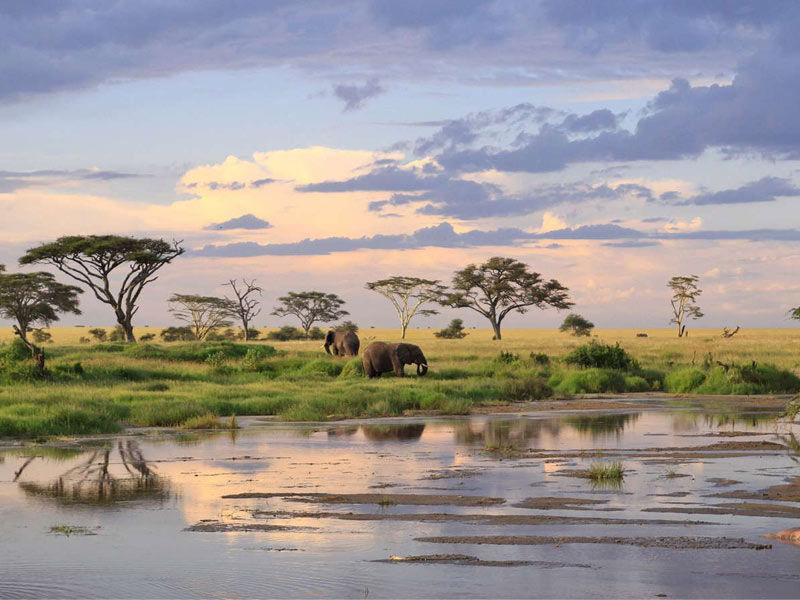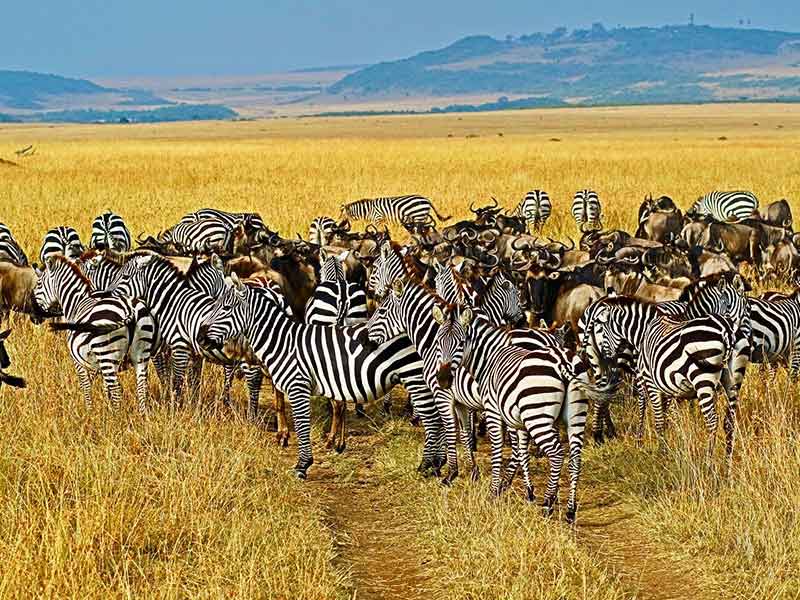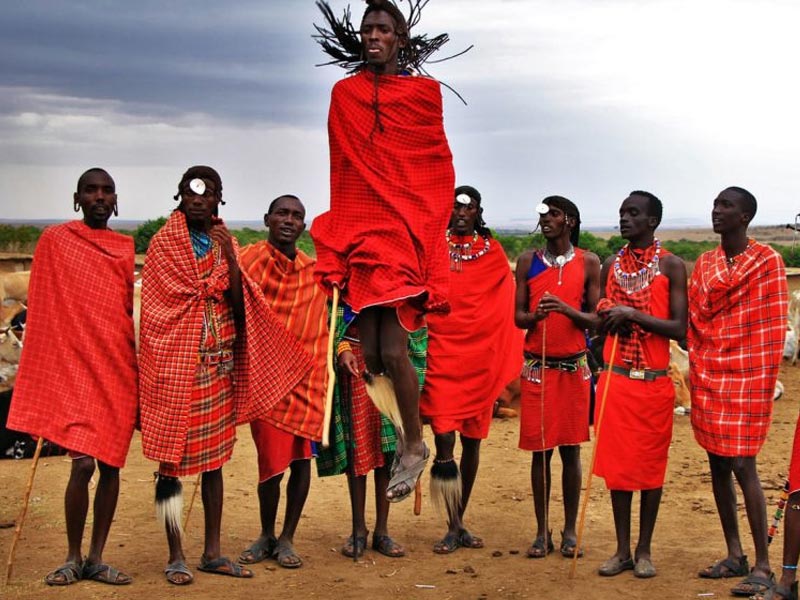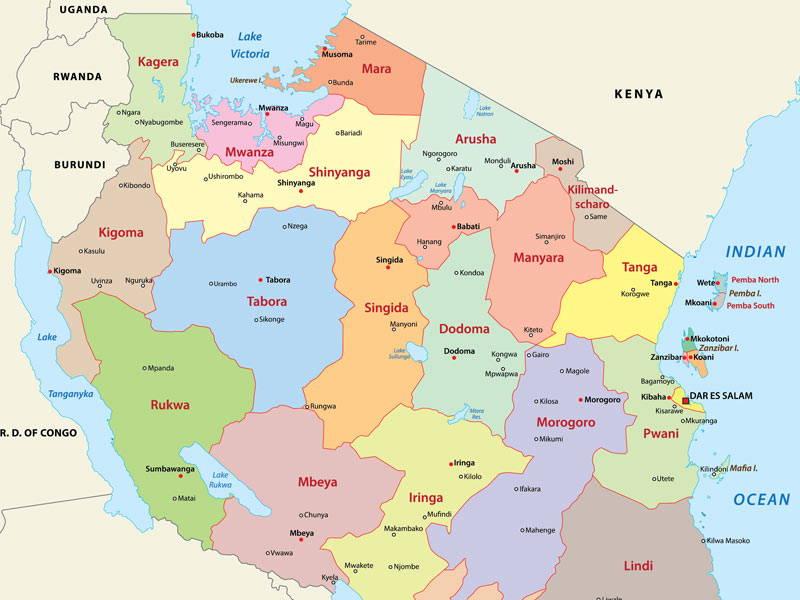Tanzania is an East African nation that is located very close to the Equator. Tanzania became a sovereign state in 1964 after Tanganyika and Zanzibar, which were formerly distinct republics, were united. More than 99 percent of the united territories’ total area is covered by Tanganyika’s mainland. Mafia Island is governed by the mainland, whereas Zanzibar and Pemba have their own independent governments. Centrally located on the mainland, Dodoma has served as Tanzania’s formal capital since 1974. The country’s largest city and port is Dar es Salaam.
Soils

Tanzania’s continental territory has a greater range of soils than any other nation in Africa. The most productive soils are found in the highland regions and are reddish-brown. Many river basins have rich soils as well, although they are vulnerable to flooding and need drainage control. On the other side, the central plateaus’ red and yellow tropical loams have poor to average fertility. High temperatures and little precipitation in these areas promote quick rates of oxidation, which causes the soil to have a low humus content and a clayey texture rather than the ideal crumbly structure found in temperate soils. Moreover, tropical downpours, which are frequently brief but quite intense, compact the soil, which results in drainage issues and leaches the soil of its nutrients.
climate
Mainland Tanzania can be divided into four main climatic and topographic regions, with climates ranging from tropical to temperate: the hot and humid coastal lowlands of the Indian Ocean shoreline; the hot and arid zone of the broad central plateau; the high inland mountain and lake region of the northern border, where Mount Kilimanjaro is located; and the highlands of the northeast and southwest. Variations in height affect Tanzania’s warm tropical climate. The high levels of solar radiation throughout the year are linked to a small amount of seasonal temperature variation, with the mean monthly variance at most locations being less than 9 °F (5 °C). Seldom do ground frosts occur below 8,200 feet

(2,500 meters).
The intertropical convergence zone’s annual migration has a significant seasonal impact on rainfall. The majority of agricultural farming in the tropics is thought to require at least 30 inches (750 mm) of precipitation annually, which only covers around half of continental Tanzania. The driest region is the central plateau, which receives less than 20 inches (510 mm) of rain annually on average and only has one rainy season from December to May. The coast has greater precipitation, with two precipitation peaks in October–November and April–May. High annual precipitation totals of more than 60 inches are found in numerous highland locations, offshore islands, and other places (1,520 mm).
Also read: 6 Best Places To Visit In Tanzania
Animal and plant life
In the highlands, where there is abundant precipitation and no distinct dry season, forests can flourish. In particular, Brachystegia, Isoberlinia, Acacia, and Combretum make up the open canopy of trees that make up the miombo forest on the western and southern plateaus. Bushland and thicket are found when there is less precipitation. Due to poor drainage and the practice of burning for grazing and agriculture, there is now forested grassland with a canopy cover of less than half in the floodplain areas. Similar to this, grassland develops in areas with poor drainage.

For instance, the calcrete, or calcium-rich hardpan, that was deposited near the surface by evaporated precipitation is responsible for the famous Serengeti Plain’s grasses. Areas with recurring flooding are where you’ll find swamps. Alpine deserts at high heights, saline deserts in poorly drained regions, and arid deserts in regions with very little precipitation are all examples of desert and semidesert climates.
indigenous groups
Tanzania’s population is made up of more than 120 different indigenous African peoples, the majority of whom are now grouped into bigger groups, according to the majority of reliable surveys. Several of the tiniest ethnic groups are slowly vanishing as a result of urbanization, politicization, and rural-to-urban migration.

Hunting bands of the San type lived in the region as early as 5000 BCE. Their descendants are believed to be the Sandawe hunters of northern mainland Tanzania. By 1000 BCE, Cushitic people who had migrated from Ethiopia had established agricultural and pastoral traditions. The Iraqw, Mbugu, Gorowa, and Burungi are descendants of the Cushitic people. From around 500 CE, iron-using Bantu agriculturalists from the west and south began replacing or assimilating the San hunters and gatherers. Around the same time, Nilotic pastoralists from southern Sudan arrived.
Languages

English and KiSwahili, the official languages of Tanzania, are both spoken. The official language, Swahili, was developed on the island of Zanzibar and is a synthesis of many Bantu dialects and Arabic. Nearly everyone in Tanzania speaks Swahili, which is the national language. Via literature, regional play, and poetry, the government and other national institutions have promoted the use of Swahili ever since the country gained its independence. For the first seven years of primary school, Swahili is also the language of instruction. Higher education institutions employ English as their primary language of instruction, and government agencies also frequently use it.




























